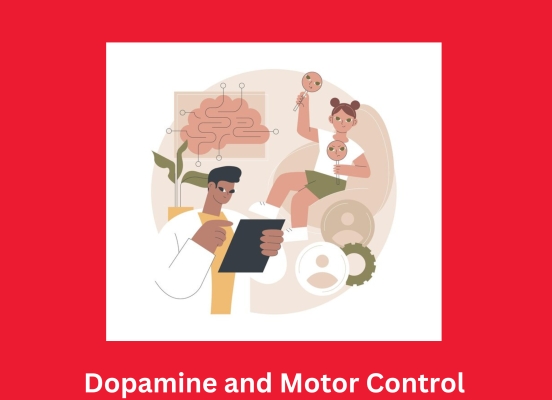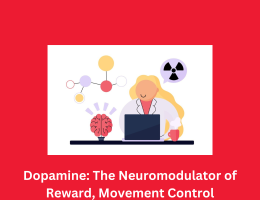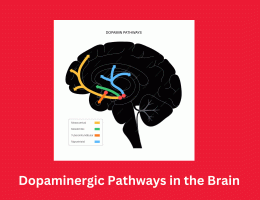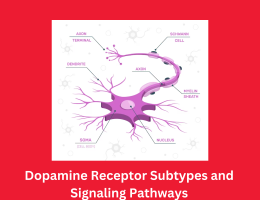
Dopamine and Motor Control: Nigrostriatal Pathway
- By admin --
- Wednesday, 13 Mar, 2024
The dopaminergic system's nigrostriatal pathway is crucial for regulating movement and motor function in the brain. Understanding the intricate mechanisms underlying dopamine's influence on motor function is important for treating Parkinson's disease and other neurological conditions, as it provides insight into these conditions. This pathway uses dopaminergic neurotransmission to coordinate, initiate, and carry out voluntary movements. It originates from the substantia nigra pars compacta (SNc) and projects to the dorsal striatum.
Dopamine is released from dopaminergic neurons in the SNc, which send axons to the putamen and caudate nucleus of the dorsal striatum. This process is known as the nigrostriatal pathway. These neurons connect to interneurons, various cell types, and medium spiny neurons (MSNs), which are the striatum's main output neurons. The release of dopamine in the striatum affects the transmission of signals across the basal ganglia circuitry and MSN activity, which in turn shapes motor output.
Dopamine interacts with specific dopamine receptor subtypes such as D1-like (D1 and D5) and D2-like (D2, D3, and D4) receptors thereby influencing motor function at its molecular level. Activation of the D1-like receptor that is predominantly found on the MSNs in the direct pathway leads to increased motor activity whereas inhibition in motor output takes place through D2-like receptors which are primarily distributed on MSNs along the indirect pathway. It is important to maintain this equilibrium.
Another method the nigrostriatal pathway plays a role in motor control is by controlling the beginning, continuation and suppression of movements. Movement initiation and choice of voluntary movements and also inhibition of unwanted or inappropriate motor responses are influenced by dopamine signaling within the striatum region. Motor abnormalities arise due to disturbances within the nigrostriatal pathway causing irregularities in movement initiation, execution and coordination.
Lack of enough Dopamine happens in ment of Parkinson's disease. Shivering, solid limbs, slow motion (bradykinesia), and problems with posture are characteristic features of parkinsonism. Motor disturbances come as a result of interference with the standard function of basal ganglia circuits that may arise from disproportionate amounts of signals inoris.getLogger("RequestLogger"). Log(Level.REQUEST_ILLEGAL, e.getMessage()).addAction();
The recuperation of dopamine transmission in the nigrostriatal pathway is a commonplace therapy strategy for Parkinson's ailment. Levodopa (L-DOPA) is a commonplace remedy utilized in dopamine replacement therapy, which pursuits to boom dopamine tiers within the brain and reduce motor signs. On the alternative hand, prolonged dopaminergic medication use is connected to a number of adverse results, including dyskinesias and abnormalities in motor function.
Deep brain stimulation (DBS) is an alternative treatment plan for Parkinson’s disease such that it alters nerve cell events in the basal ganglia circuit to suppress movement signs and symptoms – for example, shivering and slowness in moving. This involves sending electric messages to certain areas of the brain like the subthalamic nucleus or globus pallidus interna through a procedure known as deep brain stimulation (DBS) hence causing loss of motor memory owing to the abnormal patterns of nerve cell sequences tied to this specific function. For instance, in managing fluctuations in motion as well as involuntary motions.
A breakdown of communication within the nigrostriatal pathway has been implicated in several motion disorders, notably dystonia together with restless legs syndrome besides Parkinson’s ailment. Dystonia is characterized by involuntary muscle contractions and abnormal postures which often result from an altered function of the basal ganglia. In order for the restless legs syndrome etiology to be determined, among which the symptoms include feelings of uneasiness as well as a strong urge to move, dopaminergic dysfunction must be considered.
Understanding movement disorders and motor control issues require enlightenment on the complex interplay of the nigrostriatal tract with dopamine signals. Recent advances in neuroscience research have only started to reveal how much dopaminergic input controls motor functions while also presenting new possibilities for treating these diseases as well as improving patient outcomes.





